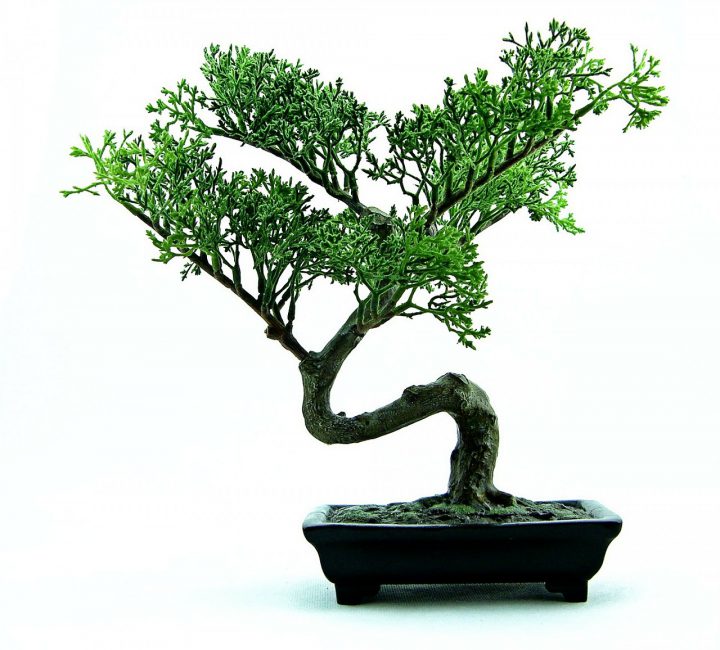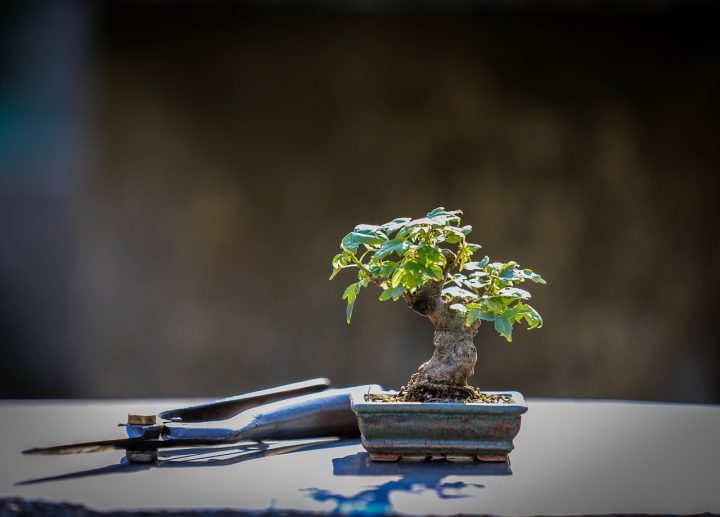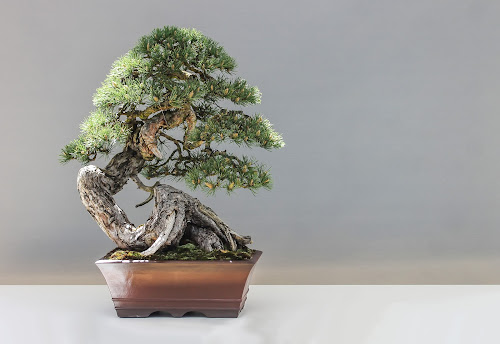BEST BONSAI TREES FOR BEGINNERS
 |
| google image-photo credits Bonsai Artisan |
If you are a beginner and BONSAI TREES fascinates you and you want to have a BONSAI but you think that it seems to be very hard to take care of Bonsai than I can guide you in this article that Bonsai tree is not that much hard as you think.
When you ask for bonsai, you may think of an image such as “senior hobby” or “difficult to care for”. However, bonsai is no longer a hobby because it has become more popular with younger generations in recent years and is rapidly increasing in popularity overseas as it is called "BONSAI."
This time, we will introduce the basic knowledge of bonsai to beginners and explain the points of care, how to raise it, troubles, and coping methods.
First, I will briefly introduce the basic knowledge of bonsai.
Bonsai overview and history
Bonsai is a work of art that comprehensively admires plants and pots, expressing the beauty and severity of nature in a small pot. It differs from general planting trees in that it grows while pursuing the ideal shape with individual sense, combining with ancient Japanese culture that finds beauty in a small space.
The history of bonsai dates back to more than 2000 years ago in China, and it is said that it originated from the culture of observing plants planted in small pots called "Bonkei." It was introduced to Japan during the Heian and Kamakura eras, and celebrities such as Yoshimasa Ashikaga, Iemitsu Tokugawa, and Hirofumi Ito carefully raised bonsai.
Bonsai has a method of standing while looking at the most attractive “front” and looking up at the bowl. First, the roots and roots, then the thickness and bending of the trunks and branches, the condition of the leaves and the balance with the pots, and the stems and branches that have withered in some pots are evaluated in order.
for detail history of BONSAI read this article: HISTORY OF BONSAI
Bonsai type-tree type
When classifying bonsai by tree type, it is as follows.
Representative "Shouhaku"
In addition to the pine trees, which can be said to be the representative of bonsai and Shinpaku of the cypress family, it also refers to conifers such as cedar and cypress. It is an evergreen tree that you can enjoy green all year round, so it is also recommended for beginners because it is durable.
Enjoying the season, "Zoki"
For Shogashi, the tree species that allow you to appreciate the changing seasons are called miscellaneous trees. There are many types of deciduous trees that fall in winter, and you can enjoy autumn leaves and spring sprouts. There are "flowers" to see flowers, "real things" to see fruits, and "grass plants" to see wild grass and mountain grass.
Other
There are many bonsai trees that are unconventional today, such as "planting bonsai" where multiple plants are planted in the same pot, "saika bonsai" where you can enjoy colorful and realistic group planting, and unique figures and small items are arranged. There is "Man Bonsai" that creates the world.
Other than that, beginners like the dry bonsai, which is finished in a dead state and requires no maintenance, the moss ball bonsai in which the soil is wrapped with moss, and the banyan tree, which is a foliage plant, are planted in the bonsai style. People can feel free to work on it.
Bonsai types-by tree shape

Since there are many types of tree-based classification, we will introduce the main ones.
Basic tree shape
The most representative tree shapes are the straight trunk (Chokka), which has a straight trunk, and the pattern tree, which has a gentle curve. If you are a beginner, try starting with the basic tree shape.
Enjoy the shape of the trunk
The trunk of the trunk hangs down, the trunk of the trunk leans to one side, and the branch of the trunk extends in the same direction. You can enjoy the movement.
Other tree shapes
A gentle “bunjingi” with a thin and tall trunk, a “kabudachi” with several trunks sharing the root, and a so-called “stem trunk” with large and small trunks growing from the same root )”, as well as “stone attachment” where the trunk clings to the stone, and “root rising” where the root is exposed from the soil.
Bonsai types-by size
When classifying bonsai trees by height, measure from the top of the edge of the pot to the top of the tree.
- Large bonsai ・・・50 cm or 60 cm or more
- Chuhin bonsai: 20-50cm or 60cm
- Small bonsai ・・・ 20 cm or less
- Mini bonsai ・・・ 10cm
- Petit bonsai: 5 cm or less
- Bean bonsai: 3-4 cm or less
Larger ones are more expensive and require specialized care, but too small ones increase the difficulty of water and soil management. Therefore, for beginners, we recommend medium to mini sizes.
Is it difficult to maintain?
It is often difficult to care for a bonsai tree, but there are three important points in raising it.
① outdoors in sunny conditions
Since bonsai is a plant that likes sunlight, it is basically managed outdoors. The ideal location is in the sun for 3-4 hours a day.
② Do not miss a watering
The most important way to grow a bonsai tree is to water it. Please perform proper watering by referring to the timing introduced in the following item.
③ Regular disinfection
Bonsai can prevent the development of pests by regular disinfection. If you are worried about management, consult a bonsai specialty store or garden professional.
Tools needed to grow bonsai

When caring for a bonsai tree, please have the following items ready.
Watering can/fog
It is a type that water comes out like a shower, and one with a removable spout is convenient. Spraying is used to water the fine branches and moss.
Scissors
It is used for pruning, but it is not necessarily for bonsai, but it is OK with general gardening scissors.
tweezers
Some types have a spatula or rake on the side of the handle, and the tip is bent to make it easier to pinch. It's a good idea to select a simple type at the beginning, and gradually prepare easy-to-use items.
fertilizer
We recommend solid fertilizers for bonsai that are organic rather than liquid. Use a special holder when the pot is small, there are many slopes of soil, or when fertilizer cannot be placed due to moss or stones.
Gardening agents
Let's prepare medicines to control pests on bonsai and prevent diseases. Rotating multiple drugs makes it harder for pests to become resistant.
Tools for repotting
When replanting every few years, you will need pliers, a net for the bottom of the pot, aluminum wire, and a chopstick.
Even beginners are OK! How to grow bonsai

Then, I will introduce how to grow and care for bonsai in order.
Place of bonsai
As mentioned earlier, basically manage your bonsai outdoors in a sunny and airy place and place it on a wooden stand or shelf. It is not suitable on stone or concrete as it gets hot due to the reflection of sunlight and gets too cold in winter.
When watching indoors, keep it in a place that is not exposed to air from the air conditioner or stove for a few days in summer and one week in winter. After watching, return it to the outdoors and expose it to sufficient sunlight.
Timing of watering
Watering is essential for a bonsai tree with small pots relative to the size of the plant. In general, spring and autumn is 1 per day times, summer is 1 in the morning and evening each time, winter is 1 in a few days times as a guide, let's give the water at the timing at which the dry the surface of the soil.
Use the watering can as a shower, and hang it from a high place over the entire tree. Give it to the soil carefully, and be careful not to let anything with pebbles or sand flow. Moisten the dense branches and moss with a spray. After checking the drainage from the bottom, if there is a saucer, discard the remaining water.
How to give fertilizer
Since bonsai has little soil and watering makes it easy for nutrients to flow, it is necessary to supplement nutrients with fertilizer. Prepare organic solid fertilizer for bonsai and give it in April to November, avoiding the rainy season and midsummer. Follow the instructions and place an appropriate amount away from the root of the plant. Fertilizer melts in 1-2 months, so add more each time.
Pruning and bud picking
For bonsai, the shape of the tree is trimmed by pruning and "picking (picking new shoots that grow from early spring)" to improve the ornamental value, but beginners should get professional advice. Would be Pruning is a process of cutting overgrown or unnecessary branches, and the time and method will differ depending on the type of tree.
In addition, bud picking, which picks the tips of the new shoots with tweezers, "bud cutting" that cuts the extended buds with scissors, "bud cutting" that removes unnecessary buds, "flower picking" that picks flowers that have finished blooming, etc., Depending on the situation, we also work to shape it with wire.
Disinfect regularly
To prevent pests from bonsai, spray the medicine regularly during the winter when the plants are dormant when the sprouts emerge, and before the rainy season. Basically, multiple drugs are used by rotating them.
Repotting every few years
When the roots grow and the pot is full, water cannot penetrate and absorb water and nutrients. Depending on the type of tree, but a few years 1 degree, replanted in the spring and autumn,
Prepare a slightly larger pot and install it through the wire for fixing the tree to the net at the bottom of the pot. Carefully remove the trees, remove the soil and cut the old roots. Put soil in a new pot, place the tree at the desired angle, and lightly wire it. Gently push in with a split while putting soil in the gap. Finally, tighten the wires firmly and you are done.
You may want to refer to the method of replanting bonsai, as images and videos are available on the Internet.
Summer care points
For summer maintenance, it is important to have watering and sunshine. As mentioned above, in the summer, there are cases where you are given twice in the morning and evening and three small bowls. When you are away from home when traveling, ask your family to water the water, or use a watering machine with a timer.
In the case of strong sunlight or sunshine in the daytime, move the place to place it or cover it with a shading net to protect it. Also, during the summer, make frequent observations and try to find pests early.
Winter care points
If citrus fruits and trees native to southern countries are to be taken in, please take them indoors when the temperature drops. Place the pots in a place where they will not be exposed to the heat of the wind, and let them sunbathe on the windowsill during the day. You can leave strong pine trees and plums and cherry blossoms that bloom well in cold weather outdoors.
However, when it snows, it is necessary to take measures such as moving the place so that the branches do not break. The spear winter of water in a few days 1 given to the guideline times, prevention of pests and the disinfection of trees Let's try to.
.
Bonsai problems and remedies
Lastly, I would like to introduce some of the problems that are likely to occur in managing bonsai and what to do about it.
Pests that are susceptible to damage
Depending on the type of tree, bonsai has powdery mildew with spots like white powder, brown spots with spots of brown spots, and mosaics with mosaic-like patterns. Disease, soot disease with mold such as black soot may develop.
Also, be careful that aphids, spider mites, scale insects, and slugs are prone to pests. If you find a pest, remove it immediately and spray a drug to prevent it from spreading.
Bonsai withers
Causes of bonsai withering may be over-watering, or the water remaining in the saucer may be sucked up into over humidity, causing roots to rot in the pot. On the other hand, water may be insufficient due to the heat and dryness of summer, and it can be cited as the cause of the cooling and heating in the room. Be especially careful with small size bonsai as it can dry easily.
Bonsai leaves fall
Depending on the type of bonsai, leaves may be dropped to prevent evaporation when the water is insufficient. If you are exposed to the strong sunshine in midsummer for a long time, water will run out, so use a light-shielding net or move to a different location. Watering in the middle of summer is basically avoided in the daytime and given in the early morning, early hours in the morning, or in the evening.
Learn how to care and care for bonsai
This time, we introduced basic knowledge about bonsai, points of care, concrete raising methods, troubles, and coping methods. If you are a beginner, choose a medium-sized bonsai tree, and keep three things in mind as a growing point: place to place, watering, and disinfection. It is safe to receive professional advice regarding pruning. Why don't you take this opportunity to incorporate bonsai loved all over the world into your life?












1 Comments
I am searching for the exact information you have written, read your blog enjoyed it. Thanks for sharing and for expert arborist and tree felling service click here
ReplyDeleteplz do not any spam link in the comment box.